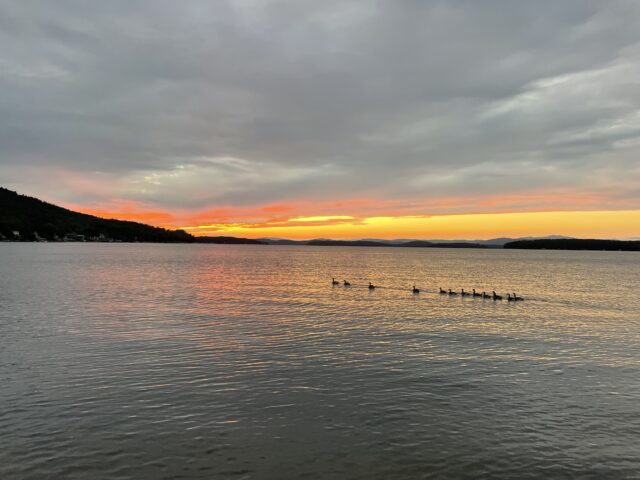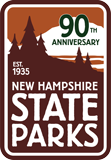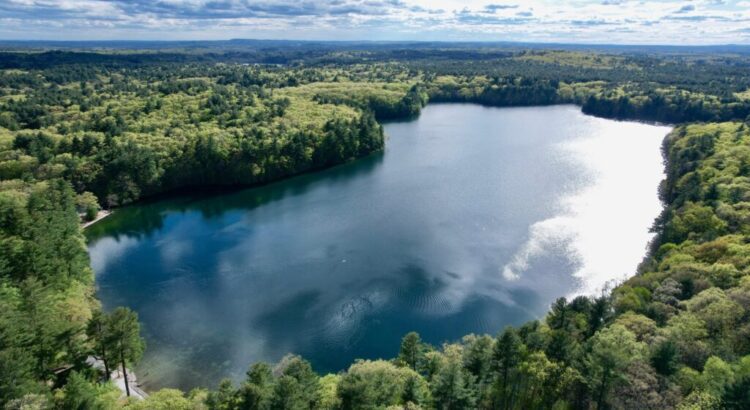by Amelia Paine, SCA Interpretive Ranger at Ellacoya, Lake Sunapee, and Pillsbury State Parks

Have you ever wished that you could live alone in nature, relying only on yourself and the world around you, observing wildlife and looking out over beautiful landscapes, away from the hustle and bustle of modern life, work, and technology?
I know I have. I often think about building a cabin in the Alaskan bush, living alone out there, and switching the rhythm of my daily life from phone calls and student loan repayments and endless emails to hauling water and chopping firewood and looking, really looking, at the world around me. Someday, I might try my hand at nature writing in the style of the greats—slowing down, living wild, and experiencing the natural world, solitaire. I’m doing a low-key version of that now, really, with my uninsulated summer cabin and tent camping four nights a week at New Hampshire’s State Parks.
Stories of living alone in the wilderness are one of the classic models of American nature writing. From Henry David Thoreau’s first writings about Walden Pond, writers have gone to the woods (or the desert, or the mountains, or the seacoast) to live deliberately.
In the 1840s, Thoreau spent two years, two months, and two days alone at Walden Pond near Concord, Massachusetts. Thoreau later recorded the experience in Walden; or, Life in the Woods (1854). In the following decades, Walden became possibly the single most important work of American nature writing, influencing pretty much everything that came after it. And there are a lot of works that came after it.
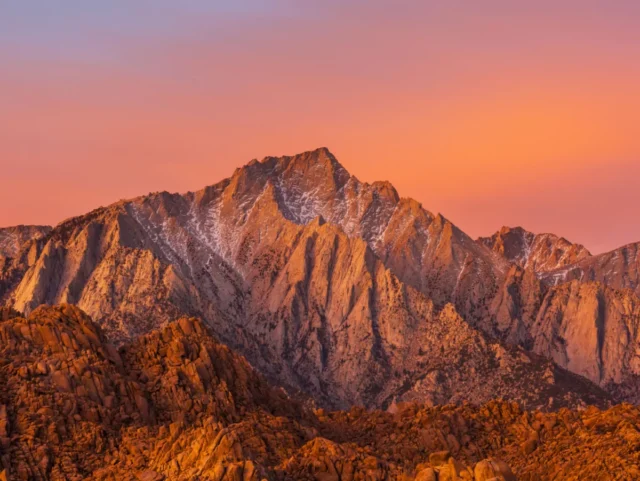
In the late 1860s, John Muir roamed the Sierra Nevada mountains of California, contributing to the creation of Yosemite National Park and forever influencing the development of the national park system, our nation’s best idea. Much later, he detailed that summer in his 1911 book My First Summer in the Sierra. In the 1920s, Henry Beston spent a year among the sand dunes and salt marshes and breaking waves of Cape Cod, commemorating his time on the beach in The Outermost House (1928). In the 1950s, Edward Abbey baked in the solitary sun of the Southern Utah desert, working as a seasonal park ranger and raging against the accelerating development of the region in Desert Solitaire (1968). There are more books, too: Aldo Leopold’s A Sand County Almanac (1949) paid tribute to the farms and forests of Wisconsin, Annie Dillard walked through Virginia’s Blue Ridge Mountains in the pages of Pilgrim at Tinker Creek (1974), and Cheryl Strayed overcame tragedy on the steep slopes of the Pacific Crest Trail in Wild (2012).
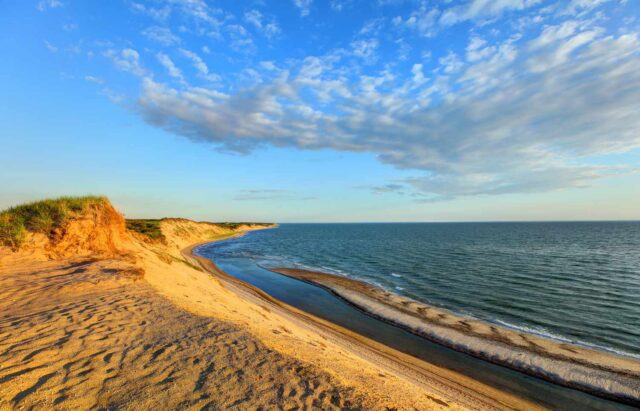
Countless other men and women have done the same, going out into the great American wilderness alone and writing about it afterwards. Or have they?
The solitary wilderness life is an engaging literary trope, sure, but it’s not reality, at least not very often. Thoreau washed his clothes at his mother’s house. Muir attended high society dinners with the elites of San Francisco. Beston walked into town most days and stopped by the local Coast Guard station on the rest of them. Edward Abbey had his wife and kids with him. Leopold, too, had a family; Dillard collaborated with mentors at Hollins College; Strayed found healing in nature, but also in connections to family, friends, and partners.
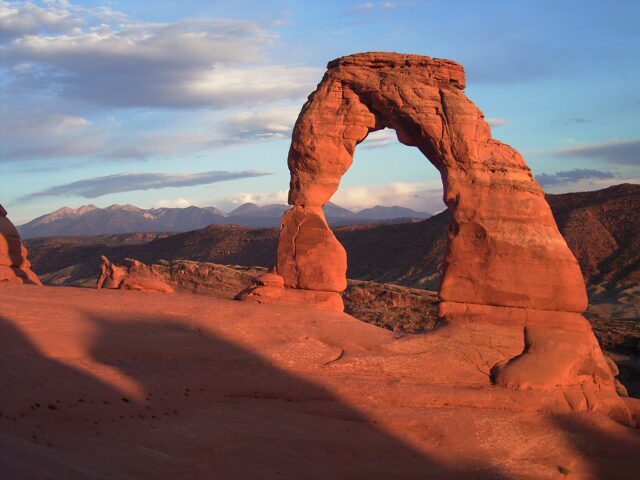
None of these writers actually cut themselves off from the world around them. All of these writers relied on the technology of their times and the communities surrounding them in order to support their lives in the “wilderness,” from Thoreau’s infamous laundry situation to Abbey’s ATV drive into The Maze to Strayed’s emotional support from the people she met on the trail. So there’s no life alone in the wilderness, and there’s no getting away from it all, even if you’re lucky enough to be able to spend a year in a cabin in the woods.
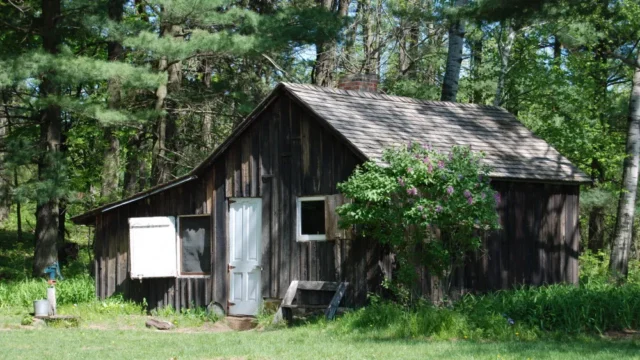
Consider, too, those who have tried to go all the way: Chris McCandless, for example, immortalized in Jon Krakauer’s Into The Wild (1996), tried to live truly alone off the land just outside Denali National Park in Alaska. He died alone, in an abandoned bus, at the age of 24, just 113 days after setting off into the wild. There’s Aron Ralston, who cut his own arm off following five days trapped under a boulder after an accident during a canyoneering trip, a trip on which he brought no way to contact anyone for help and told no one where he was going. There’s Tim Treadwell, too, a documentary filmmaker who believed that the grizzly bears of Katmai National Park in Alaska would never hurt him, after years living among them with no safety precautions. Treadwell was killed and eaten by a bear in 2003, along with his girlfriend Amie Huguenard, who had expressed her discomfort with the bears and her desire to leave Katmai prior to the attack.
So, there’s no living alone in the wilderness. There’s dying alone, sure, unless you are extremely lucky. People need a community to support them, and they need technology to keep them safe, and they need the conveniences of modern life. You can’t travel back in time before emails existed by walking out into the woods, and would you really want to, anyway? People were dying of the plague back then, and starving, and dying of dysentery on the Oregon Trail.
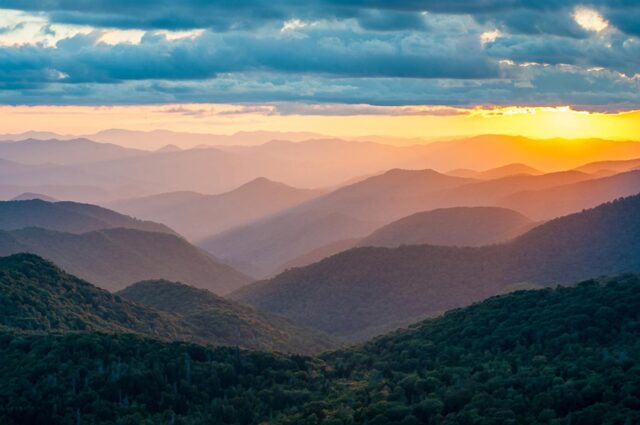
Why bother, then? Why do these places, from the mountains of California to the woods of New England to the deserts of the Southwest, still call to us, and why do these works, from Walden to Desert Solitaire to even Into the Wild, still appeal to us so deeply? Why do people still go alone into the woods, and climb mountains above the tree line, and romanticize the act of walking off alone into the wilds of Alaska? Why do I still think about doing the same?

Because it doesn’t matter. Because there is value in spending time in nature, in getting away from those emails (can you tell yet that I don’t want to check my email?), in being alone, sort of, for a little while. It’s not all or nothing. It’s a balance: between solitude and community, between adventure and safety, between nature and technology.
There are mountaineering gearheads out there, and woodsmen, and ultralight backpackers, who will tell you that it’s not worth it if you don’t go all the way. Why hike the mountain if you don’t summit, and why go outside if you don’t live alone in the wild for a year or more, and why get your boots on the trail if they’re old hand-me-downs and not the latest model, technologically advanced and developed in some lab to really connect you back to nature?
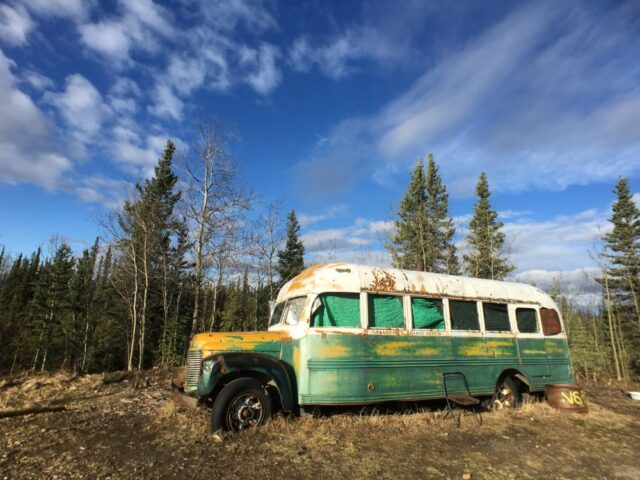
Because it’s still worth it. Some of my best hikes have been in cheap rubber flip flops, and some of my most life-changing wilderness experiences have been in groups, and some of my favorite memories are a quick walk in the woods in the one free hour I have in the middle of a busy day. It is worth it. You don’t have to go all the way; you just have to go out the door.
Be prepared. Tell someone where you’re going. Go home to do your laundry. But go to the woods, and live deliberately, whenever you can.
